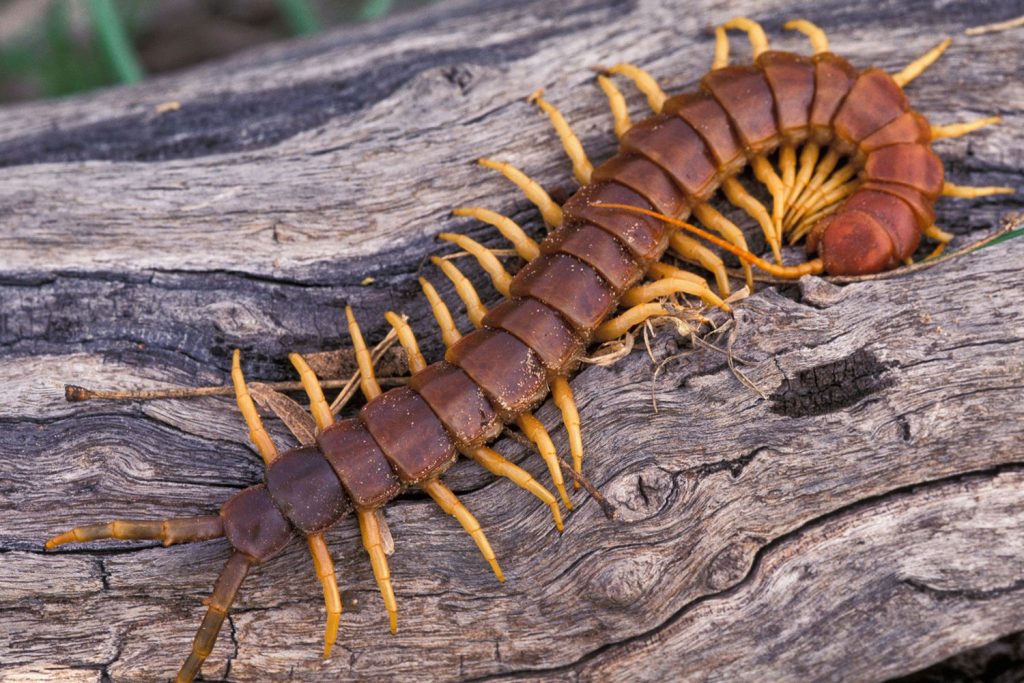Despite their name ‘centipede’ (which means ‘100 legs’), all centipedes do not have 100 legs. Centipedes are invertebrates meaning ‘without a backbone or spinal column’. Centipedes have a hard exoskeleton and jointed legs.
Like the millipedes, centipedes are highly segmented (15 to 177 segments), but with only one pair of walking legs per segment (millipedes have two legs per segment).
Many centipedes live in the soil and leaf litter, while those that hunt freely on the ground are strictly nocturnal and spend the day hiding under logs and stones where they can keep moist. They live on land in moist microhabitats (under rocks and logs, in leaf debris, or occasionally in burrows).

Centipedes come under attack from various other animals such as birds, toads and shrews as well as humans, if they are accidentally trodden on. (Some people also eat centipedes).
Centipedes are carnivores (meat-eaters), they use venom to kill their prey. The venom comes from glands that open near the first pair of modified legs (which act as poisonous fangs). Their bite can be painful to a human but not lethal in general.
Centipedes eat insects, earthworms, spiders, slugs and other small animals. The largest species of centipede is ‘Scolopendra gigantea’ which can grow to be about 12 inches long and 1 inch wide and is found in Central America.















